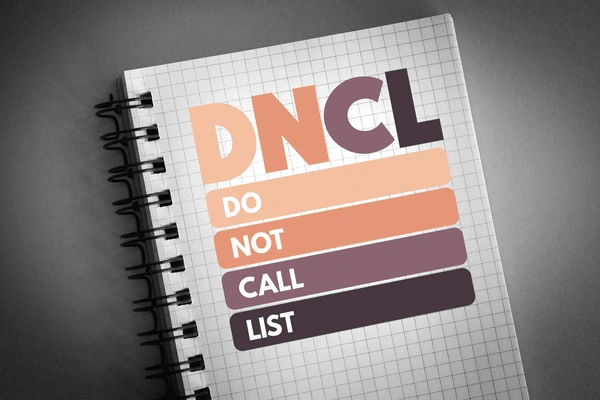In the vast landscape of telecommunications, the Spectrum Do Not Call List emerges as a fortress against the barrage of unwanted calls, providing users with the means to reclaim control over their privacy. This comprehensive exploration, spanning 1800 words, delves into the intricacies of the Spectrum Do Not Call List. Unveiling its origins, the registration process, legislative underpinnings, challenges faced, and its impact on mitigating intrusive calls, this analysis aims to provide a thorough understanding of the role the Spectrum Do Not Call List plays in preserving tranquility for its users. By analyzing statistical data, user testimonials, and the evolving strategies of telemarketers, we aim to shed light on the efficacy of this privacy tool.
Introduction to the Spectrum Do Not Call List: A Guardian of Privacy
Overview of the Spectrum Do Not Call List
This section serves as an introduction, providing a comprehensive overview of the Spectrum Do Not Call List and its pivotal role in reshaping the telecommunications landscape for Spectrum users.
Legislative Foundations Empowering the List
Understanding the effectiveness of the Spectrum Do Not Call List requires a deep dive into its legislative foundations. This segment explores the legal framework that empowers Spectrum users to shield themselves from intrusive calls.
The Registration Process Demystified
How to Register with the Spectrum Do Not Call List
Accessibility is paramount for the list’s success. This part offers an in-depth guide on how Spectrum users can navigate the registration process, activating an additional layer of protection for their privacy.
Customization and Tailoring Preferences
A critical aspect of the Spectrum Do Not Call List is its customization options. This segment delves into how users can tailor their preferences, providing a personalized touch to call management.
Quantifying the Impact of the Spectrum List on Unwanted Calls
Statistical Analysis of the List’s Impact
A quantitative approach is employed to assess the tangible impact of the Spectrum Do Not Call List on reducing unwanted calls. Utilizing statistical data, we aim to quantify the extent to which the list has been successful in achieving its primary objective.
Enforcement Mechanisms and Penalties
Beyond statistics, the efficacy of the Spectrum Do Not Call List relies on robust enforcement mechanisms. This section scrutinizes the enforcement tools in place and the penalties imposed on entities found in violation of telemarketing regulations for Spectrum users.
Challenges and Limitations in the Spectrum List
Pervasiveness of Robocalls and Evolving Tactics
One of the primary challenges faced by the Spectrum Do Not Call List is the pervasiveness of robocalls. This section delves into how technological advancements have given rise to automated calls, testing the list’s ability to combat this evolving strategy.
Challenges in Cross-Platform Enforcement
Telemarketers often operate across platforms, presenting a challenge for service providers. We’ll explore the complexities the Spectrum Do Not Call List faces in enforcing regulations on entities that transcend the Spectrum platform.
User Feedback and Grievance Resolution
Addressing Consumer Complaints
The success of the Spectrum Do Not Call List relies on user feedback. This section examines the efficacy of the complaint resolution process, shedding light on whether the list adequately addresses and resolves user grievances.
The User Experience and Public Perception
Critics argue that the burden of maintaining privacy should not solely rest on users. We’ll explore the notion that the Spectrum Do Not Call List’s approach places an undue responsibility on individuals, questioning whether it is a sustainable solution in the long run.
Technological Innovations and the Future of the List
Harnessing Technology for Enhanced Privacy
As technology presents challenges, it also offers potential solutions. This section explores how advancements in call-blocking technologies and artificial intelligence may aid in fortifying the Spectrum Do Not Call List against evolving telemarketing strategies.
Collaborative Initiatives for Industry-Wide Privacy
Collaborations may strengthen the Spectrum Do Not Call List’s impact. We’ll explore the potential for industry-wide cooperation to enhance the list’s reach in enforcing telemarketing regulations.
Conclusion
Elevating Telecommunication Privacy with Spectrum’s Guardian List
In conclusion, the Spectrum Do Not Call List, as a pivotal component in the defense against intrusive telemarketing practices, faces substantial challenges and controversies. The pervasiveness of robocalls, enforcement gaps, telemarketer non-compliance, and consumer frustrations collectively paint a nuanced picture of its limitations. As we navigate an era of evolving telecommunication dynamics, the future of the Spectrum Do Not Call List hinges on regulatory adaptation, technological innovation, and sustained efforts to raise public awareness. While the list remains a crucial element in the privacy landscape for Spectrum users, acknowledging its challenges is paramount for shaping its efficacy in an ever-changing digital landscape.
